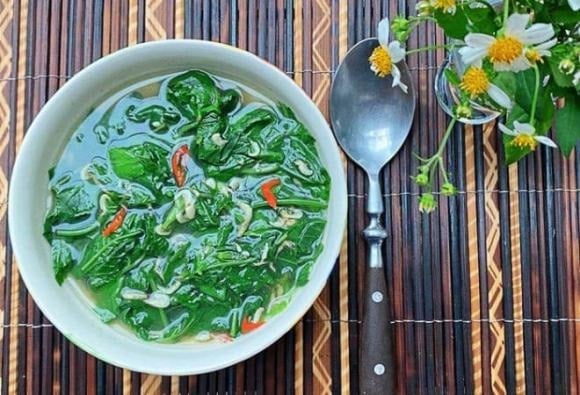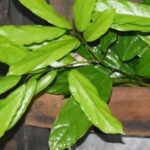Many medicinal herbs are growing wild all around us, and the Vietnamese have a saying, “You’re living in a warehouse full of medicine without even knowing it,” which rings true in many cases.
However, due to a lack of awareness, some of these wild plants are mistakenly considered weeds and regrettably discarded. According to herbalist Bui Dac Sang (Hanoi Oriental Medicine Association), at least three common wild vegetables are not only edible but also possess high medicinal value and should be utilized in our daily lives.
1. Xuyến Chi (Latin name/botanical name if available)
During spring, Xuyến Chi thrives with lush young sprouts, offering a naturally nutritious food source that is often mistaken for a weed. Instead of uprooting it, you can harvest Xuyến Chi to prepare refreshing and healthy dishes.
Xuyến Chi is also known by other names such as Đơn Kim, Cúc Áo, and Quỷ Châm Thảo. In traditional Oriental medicine, this plant is believed to have a bitter taste and a neutral nature. It is used to clear heat and detoxify the body, dispel wind, stimulate blood circulation, reduce inflammation, and dissipate blood stasis. Both the stem and leaves (excluding the roots) are usable for medicinal purposes.
In folk medicine, Xuyến Chi is employed to treat ailments such as sore throat, respiratory infections, intestinal inflammation, poor digestion, joint pain, and even malaria. Modern scientific research has identified certain compounds in Xuyến Chi, particularly flavonoids and polyynes, which exhibit antioxidant, antibacterial, anti-diabetic, and anticancer properties.

However, herbalist Bui Dac Sang cautions that the use of Xuyến Chi as medicine should be done under professional guidance and with proper dosage to ensure safety.
2. White Clover (Trifolium repens)
White Clover is a familiar wild plant that often grows in damp places, along roadsides, or on rice field embankments. Despite being easily accessible and abundant, it is often uprooted because people are unaware of its valuable benefits.
The young leaves and shoots of White Clover can be cooked as a soup or boiled, providing a refreshing and cooling effect on the body. In Oriental medicine, White Clover is believed to have a slightly sweet taste and a cooling nature. It helps with diuresis, reduces inflammation and swelling, and clears heat from the body.
The entire White Clover plant can be harvested year-round for medicinal purposes, either used fresh or dried. This is one of those wild vegetables that is not only easy to prepare but also offers numerous health benefits that should not be overlooked.

3. Cúc Tần (Blumea balsamifera)
Cúc Tần is a familiar plant to the Vietnamese and is used not only as a vegetable but also as a folk medicine with multiple health benefits.
According to Oriental medicine, Cúc Tần has a bitter taste and a cooling nature, primarily influencing the lungs and kidneys. Traditionally, it has been used to treat ailments such as colds, fever, digestive disorders, poor appetite, difficult urination, painful urination, joint pain, and chronic fatigue.
Modern scientific research has validated the pharmacological value of Cúc Tần. The essential oil derived from its leaves contains compounds like camphor, borneol, cineol, and limonen, which exhibit strong antibacterial and antifungal properties. The root of the plant helps suppress inflammatory responses causing joint pain, while substances like β-sitosterol and stigmasterol have been shown to support diabetes treatment and neutralize snake venom.
Despite its promising medicinal properties, the herbalist cautions against self-medication with Cúc Tần. Before using it for therapeutic purposes, it is advisable to consult with a qualified practitioner to ensure safety, efficacy, and avoid potential interactions with other medications.



































